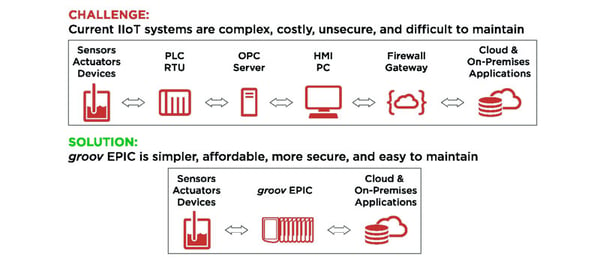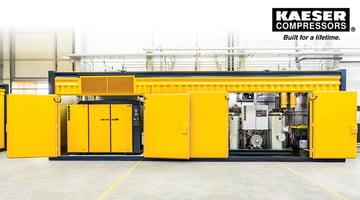The convergence of Operational Technology (OT) and Information Technology (IT) systems may help manufacturers embrace new service offerings using web-based business models.
 Many years ago one of my distributor partners took me to do an automation demo for a very large industrial OEM. Afterward we went into a stockroom, where she noted on a clipboard all the components she supplied to them that needed to be re-ordered.
Many years ago one of my distributor partners took me to do an automation demo for a very large industrial OEM. Afterward we went into a stockroom, where she noted on a clipboard all the components she supplied to them that needed to be re-ordered.
The form was dropped into the inbox of a Purchasing Agent on our way out.
Increased business intelligence
This memory came back into my mind as I was thinking about new business models for manufacturers that may result from the Industrial Internet of Things (IIoT). Besides a purchase order being issued, I’m sure the information on that sheet made its way, probably manually, into an ERP (Enterprise Resource Planning) system.
Supplier-managed inventory is not a new concept. Imagine, though, if a data source for an ERP system was one level “lower” than supplier EDI (Electronic Data Interchange) and accessed directly from a machine?
Advances in automation technology today are helping make this data exchange with IT software and cloud platforms simpler. Opto 22’s new groov EPIC (Edge Programmable Industrial Controller), for example, contains IIoT-enabling tools that eliminate the PCs, OPC servers, gateways, and integration that were often required by traditional PLCs.

With the OT data more easily available to IT systems, business leaders may ask themselves, “What opportunities does the connected enterprise present for my organization?” The answer is likely to be new services that use internet-based business models.
IoT-Based Services
A lot has been written and talked about how the convergence of OT and IT can help industrial companies operate more efficiently, reduce downtime, increase profitability, and do things like move from preventative maintenance to predictive.
Most of these outcomes are facilitated by making plant floor data available to software platforms that can combine it with other data to perform advanced analytics. What about manufacturers using this new business intelligence to serve or add value to their customers? Many forward-thinking companies are leveraging IIoT technologies to develop new business models based on delivering service rather than just a product.
I’ve been using supply-chain integration as an example, and it is one area that previously product-oriented manufacturers are exploring to be more service focused. In today’s competitive environment where differentiation on product alone is increasingly difficult, drivers include things like developing closer relationships with customers and improving business intelligence through customer feedback.
Some companies are even looking at integrating CRM (Customer Relationship Management) & Marketing Automation platforms with operational and enterprise data. With this approach, new services that could add value for their customers include PLM (Product Lifecycle Management), faster product development, data warehousing, and product customization.
Product-as-a-service
A compelling case for the use of internet technology to provide service to customers is with OEMs and machine builders. The idea of delivering a machine to a customer and providing remote support (commissioning, troubleshooting, maintenance) as a service is also not new. The difference today is that IIoT-enabling technologies in automation have removed some of the IT barriers and made it more feasible. My colleague Dan White covers this well in his post, Outbound! Monitor OEM Machinery with little to no IT involvement.
 Some innovative OEMs are taking this idea to the next level and offering what is being called “product-as-a-service.”
Some innovative OEMs are taking this idea to the next level and offering what is being called “product-as-a-service.”
A great example is Kaeser Compressors, who offer their compressors-as-a-service through the Sigma Air Utility.
Charging for CFM (cubic feet per minute) usage rather than for the equipment itself offers value to their customers by replacing an often difficult to obtain capital expenditure with an operational one.
In this short video they make a great point by saying, “You probably don’t generate your own electricity, water, or gas, so why generate your compressed air?” This “servitization” through IIoT technology is likely to grow with the ever-increasing interactive web mentality in today’s world.
What do you think?
What other service-based business models are you seeing emerge from the IIoT? How is your company embracing the IIoT to better serve your customers? I’d love to hear from you.
